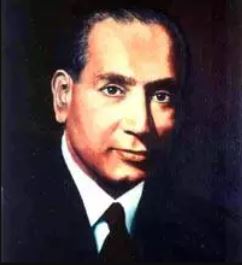Attitude Towards Life
 In spite of his academic interests, Birbal was by no means a recluse and he enjoyed in full measure the lighter side of life, though in his own way. When some of the Indian students at Cambridge staged a fancy dress celebration, he turned up as a sadhu (an ascetic), which was not altogether un symbolic of his inner self. He was extremely fond of games and retained his interest in sports for a long time. He not only represented his school and college hockey XIs but was also very keen on tennis at the Government College, Lahore. At Cambridge he represented the victorious Cambridge Indian Majlis at tennis against the Oxford Majlis.
In spite of his academic interests, Birbal was by no means a recluse and he enjoyed in full measure the lighter side of life, though in his own way. When some of the Indian students at Cambridge staged a fancy dress celebration, he turned up as a sadhu (an ascetic), which was not altogether un symbolic of his inner self. He was extremely fond of games and retained his interest in sports for a long time. He not only represented his school and college hockey XIs but was also very keen on tennis at the Government College, Lahore. At Cambridge he represented the victorious Cambridge Indian Majlis at tennis against the Oxford Majlis.
Traverses In The Himalayas
Even as a student Birbal made one of the biggest collections of Himalayan plants at considerable sacrifice of his routine studies and examination work. He made numerous excursions to the Himalayas during which Hooker's Flora of British India was his invariable companion. He devoted a great deal of time, irrespective of other work, to the investigation of these plants, some of which, I believe, now form a part of the New Herbarium. The passion for outdoor life and trekking was acquired early. The traverses from Pathankot to Rohtang Pass; Kalka to Chini (Hindustan-Tibet road) via Kasauli, Subathu, Simla, Narkanda, Rampur Bushahr, Kilba, taking the Buran Pass (16,800 ft. high) in the stride are worth mentioning. Other traverses were carried out from Srinagar to Dras, across the Zoji la Pass; Srinagar to Amarnath (height 14,000 ft. with another climb of about 16,000 ft. en route); Simla to Rohtang (12,000 ft.) via the Bishlao Pass and thence back to Pathankot.
On his return from Europe, Birbal made long traverses independently, the most important of which was from Pathankot to Leh in Ladakh in 1920. The route followed during this traverse, carried out in the company of the late Prof. S. R. Kashyap, himself a keen botanist, was Pathankot- Khajiar-Chamba-Leh and thence back via the Zoji la Pass-Baltal-Amarnath-Pahalgam and finally Jammu. This tour lasted over several weeks and resulted in a rich collection of Himalayan plants.
Between 1923 and 1944 Birbal made a number of other traverses in the Himalayas, accompanied at times by his wife. In 1925 between Srinagar, Uri, Poonch, Chor Panjal, Pal Gagrian and thence to Gulmarg, they were marooned on the snow at Chor Panjal and arrived at Gulmarg after much hardship. In 1944 he repeated the traverse of 1923, then left unfinished owing to unavoidable circumstances. This time he was also accompanied by Prof. Jen Hsü and another colleague from the University, Dr. R. D. Misra. Their route lay between Gujrat, Bhimbar, Nowshera, Rajauri, Thanamandi, Poonch, Aliabad, Uri and finally Srinagar.
It was these treks through the Himalayas which gave him that expansive horizon, breaking through the bounds of insularity, and which enabled him to view palaeobotanical and geological problems in their widest perspective, so essential to their correct understanding. It was these accumulated experiences and his geological background, indispensable for palaeobotanists, which he brought to bear upon his views on the origins and distribution of fossil floras, and upon the geographic orientation of ancient continents and seas.

